Current events
Next talk on Friday in 2 days by David Tebbe.
News 22.07.2025
New publication: Recitation tasks revamped? Students’ perceptions of smartphone-based experimental and programming tasks in introductory mechanics
Site Content:
24.09.2019
New publication including cover page: Two-dimensional materials
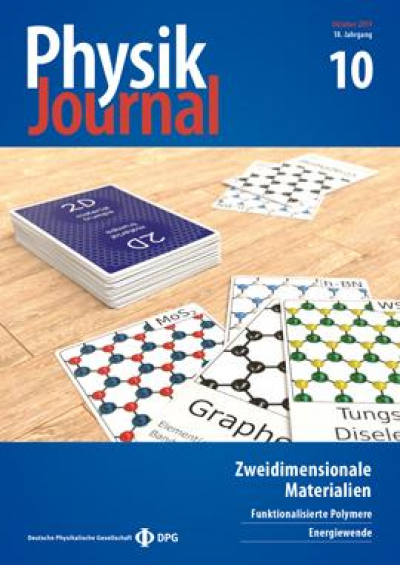
Vielfalt in zwei Dimensionen -
Physik Journal 18, 25 (2019)
Van-der-Waals-Kräfte erlauben es, aus zweidimensionalen Materialien
Heterostrukturen mit maßgeschneiderten Eigenschaften aufzuschichten.
Neue Materialien zu entdecken und geschickt zu nutzen,
ist ein Garant für den technologischen Fortschritt.
Ein prominentes Beispiel ist die Rolle von Silizium in
der modernen Mikroelektronik. Zweidimensionale
Materialien, insbesondere kombiniert zu Van-der-
Waals-Heterostrukturen, besitzen einzigartige Eigenschaften
und ermöglichen eine neuartige Elektronik
und integrierte Optoelektronik.

26.08.2019
New Publication: Integrated impedance bridge for absolute capacitance measurements at cryogenic temperatures and finite magnetic fields
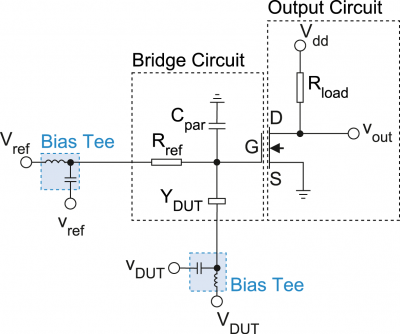
Rev. Sci. Instrum. 90, 084706 (2019)
We developed an impedance bridge that operates at cryogenic temperatures (down to 60 mK) and in perpendicular magnetic fields up to at
least 12 T. This is achieved by mounting a GaAs HEMT amplifier perpendicular to a printed circuit board containing the device under test and
thereby parallel to the magnetic field. The measured amplitude and phase of the output signal allows for the separation of the total impedance
into an absolute capacitance and a resistance. Through a detailed noise characterization, we find that the best resolution is obtained when
operating the HEMT amplifier at the highest gain. We obtained a resolution in the absolute capacitance of 6.4 aF/√Hz at 77 K on a combdrive
actuator while maintaining a small excitation amplitude of 15 kBT/e. We show the magnetic field functionality of our impedance bridge
by measuring the quantum Hall plateaus of a top-gated hBN/graphene/hBN heterostructure at 60 mK with a probe signal of 12.8 kBT/e.

24.07.2019
Benedikt Frohn attended the 69th Lindau Nobel Laureate Meeting
Benedikt Frohn attended the 69th Lindau Nobel Laureate Meeting dedicated to physics. The 580 students from 89 countries had the opportunity to discuss among each other and with the 39 Nobel Laureates. During best weather on the beautiful island of Lindau the students consisting of undergraduates, PhD students and post-doctoral researchers had plenty of possibilities to interact with the Nobel Laureates.
Benedikt Frohn says about the meeting: “It was a remarkable experience. The passion for science was ubiquitous and connected students and Laureates. They inspired me to go beyond the boundaries of today’s knowledge. I took a renewed motivation, a broadened scientific horizon and many new friendships home with me.”
Benedikt together with Piotr Kapuściński from CNRS in France and Rebekka Garreis from ETH Zurich in Switzerland won the poster prize at this years "Graphene Study 2019" making it possible to attend the Lindau meeting. In particular, the Graphene Flagship made this possible through a collaboration started this year with the Lindau meeting's organizers. Graphene and 2D materials were also a repeatedly discussed topic with Konstantin Novoselov giving a talk about "Materials of the Future" as well as a Science Breakfast were Graphene Flagship Director Jari Kinaret, Klaus von Klitzing and Novoselov spoke. Here the students had the opportunity to join the discussions and share their ideas about the future materials.
More information can be found at the flagship news-page.
Foto/Credit: Patrick Kunkel/Lindau Nobel Laureate Meetings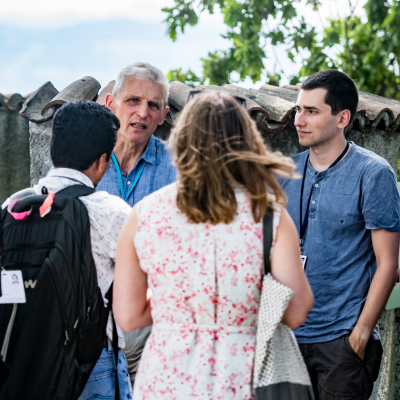

14.06.2019
New Publication: Spin States Protected from Intrinsic Electron-Phonon-Coupling Reaching 100 ns Lifetime at Room Temperature in MoSe2
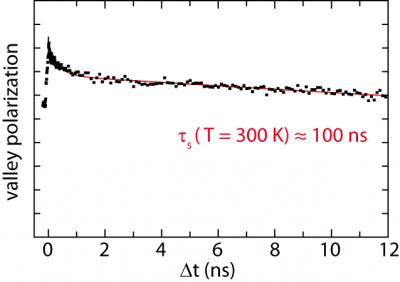
Nano Lett. 19, 4083(2019)
We present time-resolved Kerr rotation measurements, showing spin lifetimes of over 100 ns at room temperature in monolayer MoSe2. These long lifetimes are accompanied by an intriguing temperature-dependence of the Kerr amplitude, which increases with temperature up to 50 K and then abruptly switches sign. Using ab initio simulations, we explain the latter behavior in terms of the intrinsic electron–phonon coupling and the activation of transitions to secondary valleys. The phonon-assisted scattering of the photoexcited electron–hole pairs prepares a valley spin polarization within the first few ps after laser excitation. The sign of the total valley magnetization, and thus the Kerr amplitude, switches as a function of temperature, as conduction and valence band states exhibit different phonon-mediated intervalley scattering rates. However, the electron–phonon scattering on the ps time scale does not provide an explanation for the long spin lifetimes. Hence, we deduce that the initial spin polarization must be transferred into spin states, which are protected from the intrinsic electron–phonon coupling, and are most likely resident charge carriers, which are not part of the itinerant valence or conduction band states.

03.06.2019
New Publication: A corner reflector of graphene Dirac fermions as a phonon-scattering sensor
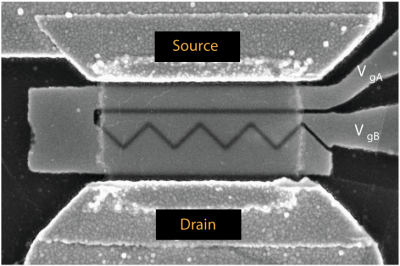
Nat. Commun. 10, 2428 (2019)
Dirac fermion optics exploits the refraction of chiral fermions across optics-inspired Klein-tunneling barriers defined by high-transparency p-n junctions. We consider the corner reflector (CR) geometry introduced in optics or radars. We fabricate Dirac fermion CRs using bottom-gate-defined barriers in hBN-encapsulated graphene. By suppressing transmission upon multiple internal reflections, CRs are sensitive to minute phonon scattering rates. Here we report on doping-independent CR transmission in quantitative agreement with a simple scattering model including thermal phonon scattering. As a signature of CRs, we observe Fabry-Pérot oscillations at low temperature, consistent with single-path reflections. Finally, we demonstrate high-frequency operation which promotes CRs as fast phonon detectors. Our work establishes the relevance of Dirac fermion optics in graphene and opens a route for its implementation in topological Dirac matter.

15.05.2019
Supporting SciPost

Christoph Stampfer became an Editorial Fellow at SciPost, joining the Editorial College (Physics).

09.05.2019
Düsseldorf Marathon 28.04.2019
After several months of preparation our Institute was ready to line up at another big sports competition - the Düsseldorf Marathon 2019. Together with over 20000 other runners and the best weather conditions Markus Müller (1:35:59) and Benedikt Frohn (1:42:39) went for the 21.1km half Marathon distance while Michael Schmitz successfully finished the full 42.2km Marathon in 2:59:33. Gratulations!
marathon Düsseldorf_orig.jpeg)

09.05.2019
Powerman Alsdorf 14.04.2019
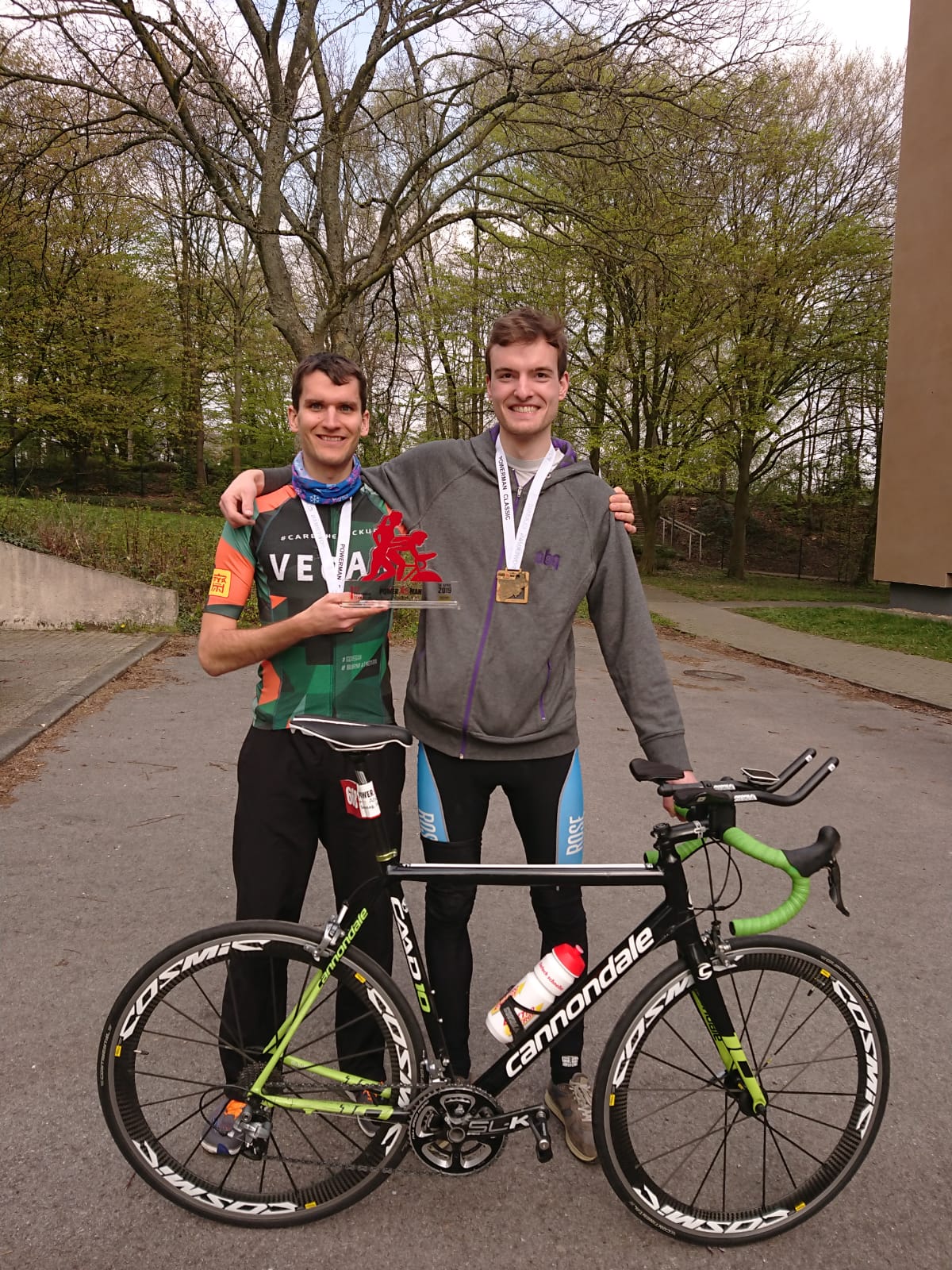
In the early sunday morning the at freezing temperatures and snow fall, our colleagues Michael Schmitz and Samuel Möller took part in the Powerman Alsdorf Duathlon together with over 700 other athletes. Competing in the relay race they had to alternately run, bike and run 10KM/60KM/10KM. With splits of 36:42, 1:34:02 and 37:27 and a total time of 2:50:20 they distanced by far all other relay competitors and took the first place. Gratulations!

